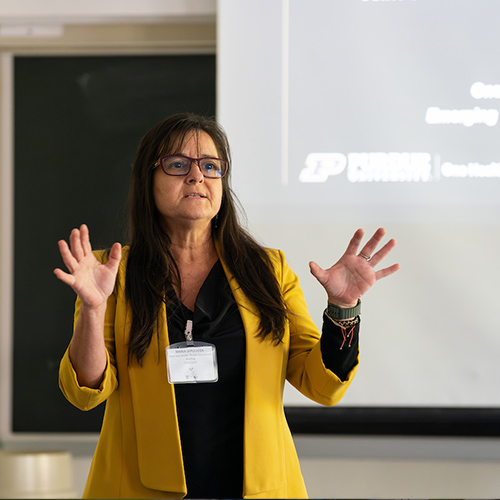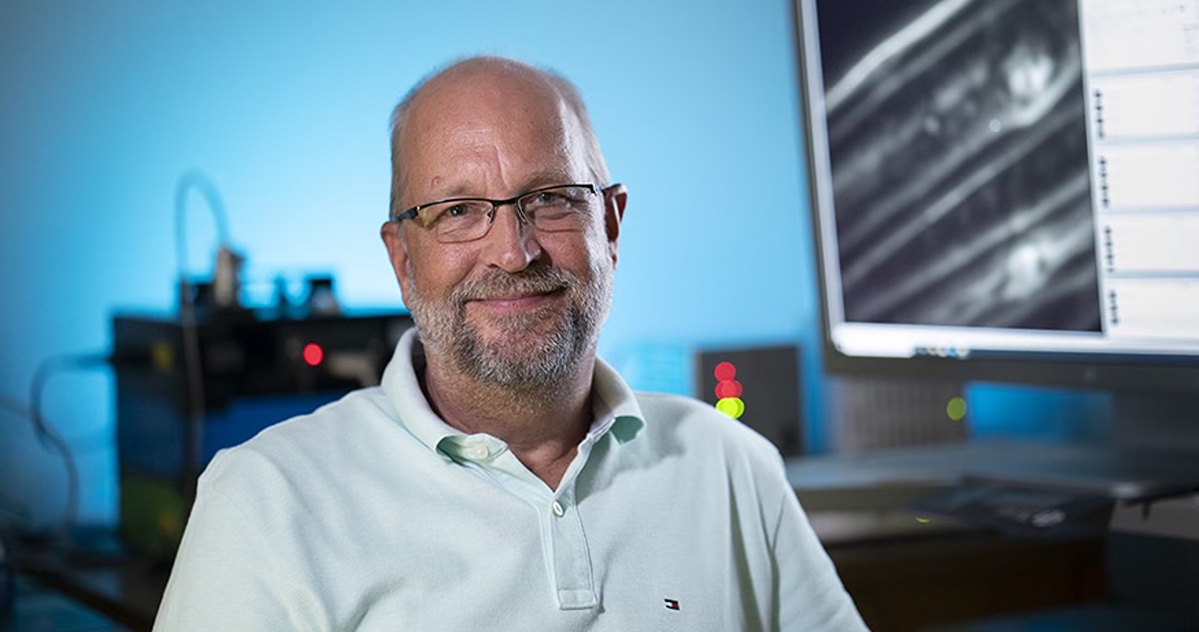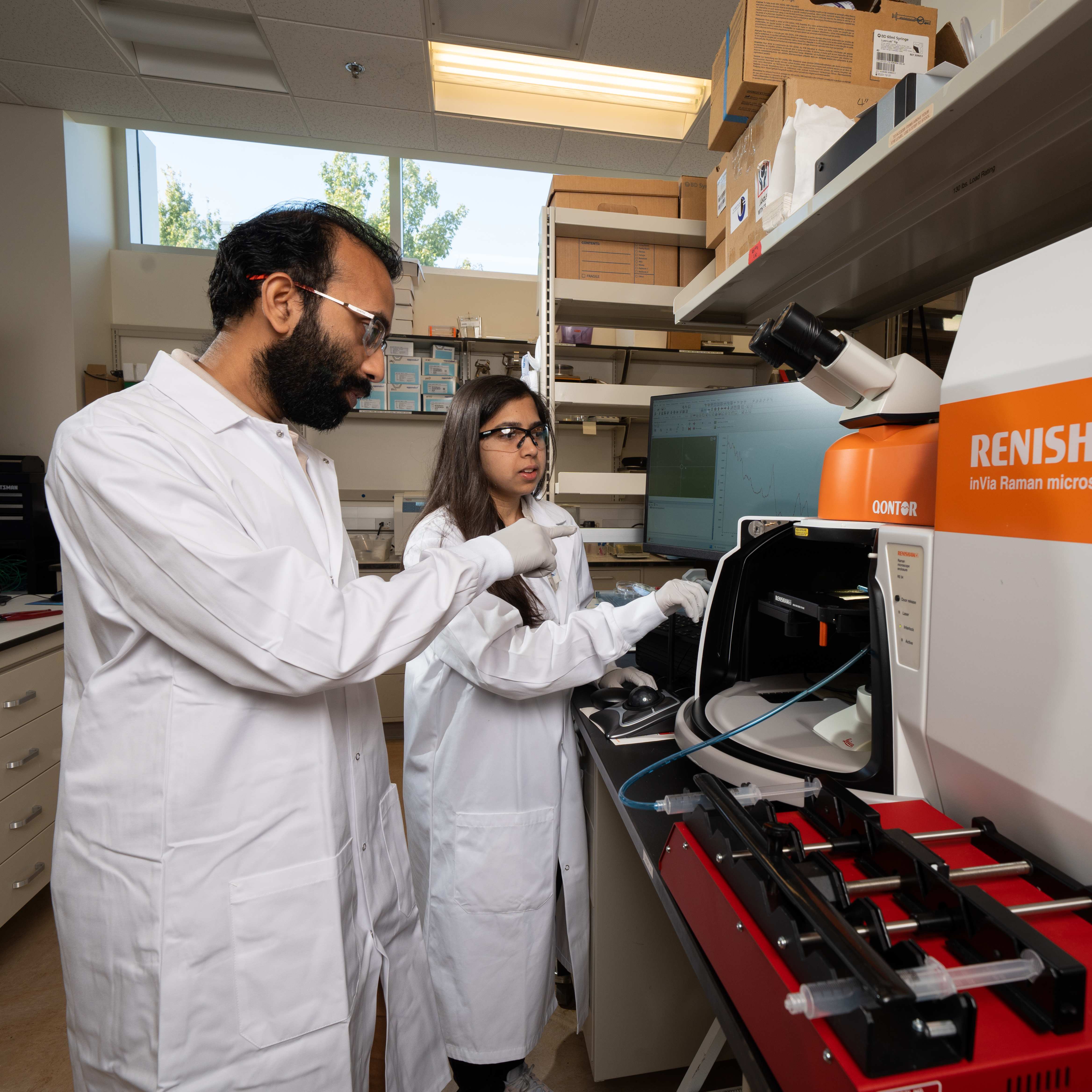Food science researchers contribute to Purdue’s One Health Initiative
ONE HEALTH | FOOD SAFETY
“Food is Central to Everything”
There are a few constants in human life. Sleeping. Breathing. Using the bathroom. But the constant that captures the most of our time and attention, the one that’s central to our cultures, our families, our memories, is eating. From a baby’s first bite of banana to a child’s birthday cake to college pizza parties to anniversary boxes of chocolate, food is how we mark time, bond and show love. Increasingly, it’s clear that food is also the key to our health, in ways both obvious (candy rots your teeth) and less obvious (how certain fibers affect the microbiome).
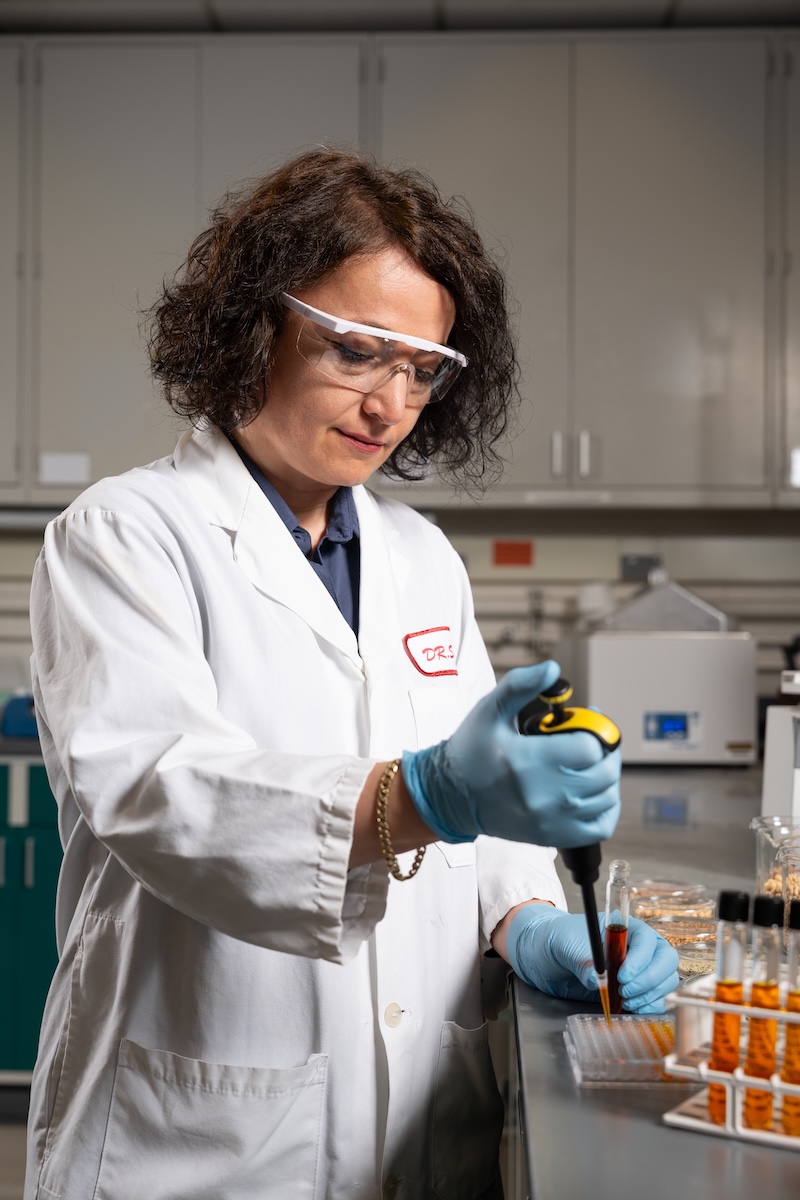
In Purdue’s Department of Food Science, researchers are taking on issues of food and health in new and innovative ways. Their work fits neatly into Purdue’s new One Health Initiative, launched last year to “tackle complex challenges with real-world impact at the intersection of human, animal and plant health.”
“Food is central to everything,” says Senay Simsek, head of the Department of Food Science and Dean's Chair in Food Science. “What we eat will impact our health in the long-term and the short-term.”
The One Health Initiative involves multidisciplinary research, industry partnerships, and joint ventures with other institutions. A recent example is a matched $2.5 million donation to Riley Children’s Foundation from the Ricks Family Foundation, which funds a new joint research project with Indiana University to study the effect of foods on children’s gut microbiome. The Heartland Children’s Nutrition Collaborative will “combine the strength and expertise of Purdue’s College of Agriculture Department of Food Science and the IU School of Medicine Department of Pediatrics to discover how early-life food intake can shape and influence both short-term and long-term health Simsek and Carmella Evans-Molina, director of the Indiana Diabetes Research Center and the Eli Lilly and Company Professor of Pediatric Diabetes at the IU School of Medicine, are leading the project.
Healthy Gut for Healthy Body
Simsek’s own area is food chemistry, and her specialty is dietary fiber.
“In layman’s terms, dietary fiber is the carbohydrates we cannot convert to glucose,” she says. “They are not digested in the digestive tract, but fermented in the large intestine and converted to useful compounds. They give us satiety, but do not contribute to calorie intake.”
Most of us understand fiber is important to healthy digestion and body weight, but researchers are increasingly uncovering other ways fiber is beneficial. Simsek is currently studying how compounds in bran can help the immune system, and has also done cell culture studies on whole wheat fiber’s effect on colon cancer prevention.
There are multiple fiber projects in play at the Whistler Center for Carbohydrate Research, a university-industry collaboration that researches practical applications of carbohydrates. Here, Professor Bruce Hamaker and Assistant Professor Thaisa Cantu-Jungles are working on a USDA grant-funded project looking at the impacts of different whole-food fibers on gut health and inflammation.
Substances labeled ‘fiber’ are not all the same, Cantu-Jungles says. There’s actually an enormous variety of structures, and these structures have different effects. People also have unique gut microbiomes that respond differently to fibers. Their team’s work aims to understand how gut bacteria use fiber at a more granular level, to consistently modulate the microbiome and promote health, even in individuals with different gut bacteria.
“We’re trying to understand the physical and chemical features of dietary fibers, and see if we can select or modify them to make fibers align with specific beneficial bacteria types,” she says.
Cantu-Jungles, Hamaker and their team have collaborated with doctors at Rush University Medical Center in Chicago on studying the effects of designed fiber blends on gut and brain inflammation. This could potentially lead to treatments for disorders from Parkinson’s to PTSD.
Though the study was very preliminary, the results were “very promising,” Cantu-Jungles says; markers of gut and brain inflammation were reduced in just 10 days. The next step will be a randomized controlled study.
Cantu-Jungle also received two Heartland Children’s Nutrition Collaborative Grants, one, in collaboration with Lavania Reddivari, to study how fiber might modify inflammation in pediatric ulcerative colitis, and one to look at whether prebiotic supplements might delay the onset of Type 1 diabetes.
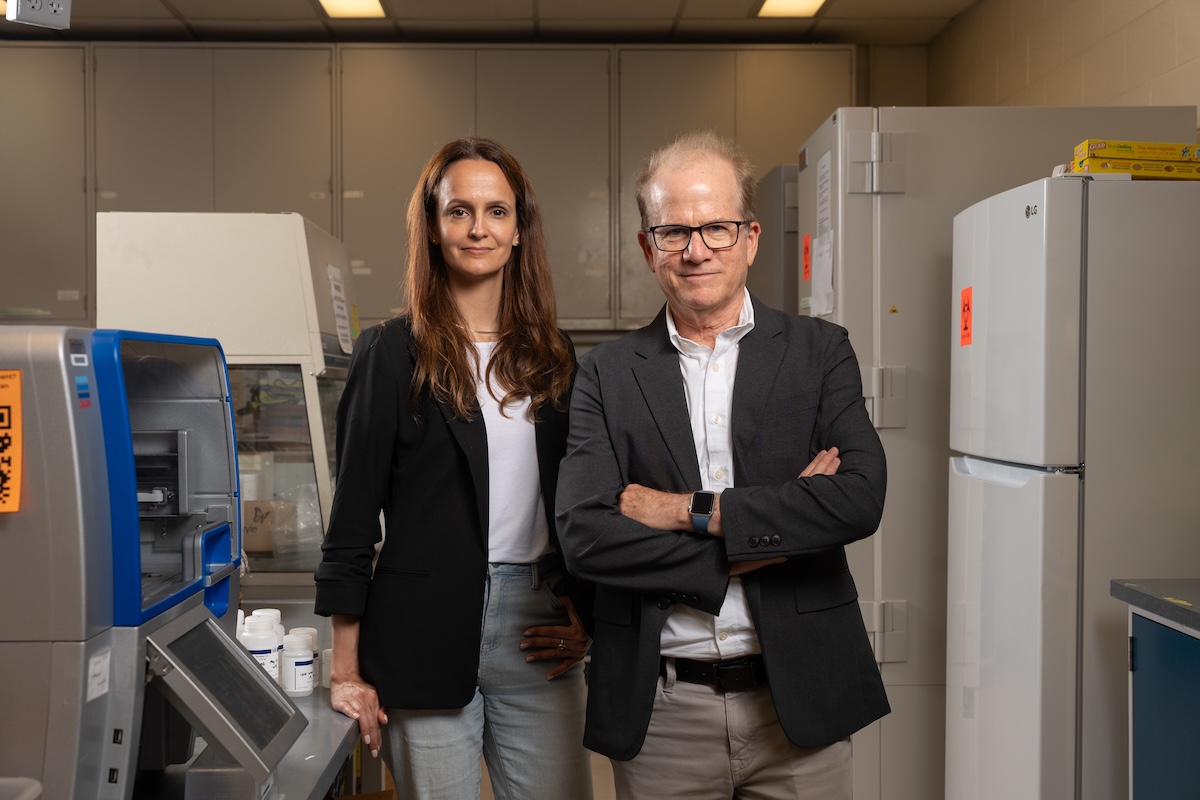 Thaisa Cantu-Jungles and Bruce Hamaker in Purdue University's Whistler Center for Carbohydrate Research.
Thaisa Cantu-Jungles and Bruce Hamaker in Purdue University's Whistler Center for Carbohydrate Research. Starches for Healthy Weight
Starches have often been seen as the enemy of weight control, hence the huge popularity of low-carb diets. But certain starches could actually be beneficial, Hamaker says. Animals studies have shown that specific starches can trigger the body’s satiety signals by elevating levels of GLP-1 (glucagon-like peptide-1), a hormone produced in the intestines that regulates blood sugar. The cells that secrete GLP-1 are in greater abundance at the bottom of the small intestine. Most starchy foods are digested quickly at the top of the small intestine. Finding a starch that isn’t digested until further along could be game-changing.
“There’s good reason for us to think if we could get digestion occurring at the bottom of the small intestine, we could activate that system,” Hamaker says.
His team was just funded by the Heartland Children’s Nutrition Collaborative to conduct a clinical study in the teen obesity clinic at Riley Hospital for Children. Teens will get starch supplements and will be monitored for appetite and weight.
Ultimately, Hamaker hopes to help design a supplement that could work similarly – if not as dramatically – as popular GLP-1 agonists like Ozempic.
Good Fats
Weicang Wang, a researcher specializing in dietary lipids and human health, is also a recipient of a Heartland Children’s Nutrition Collaborative grant. Collaborating with Erick Forno from the IU School of Medicine, his team is looking at how an omega-3 fatty acid supplement – DHA derived from algae oil – might alleviate childhood asthma. The Purdue team is developing a mouse model that mimics childhood asthma, while the IU team will conduct clinical studies.
“We want to translate our knowledge into real human study and make a meaningful impact,” Wang says. “We’re fortunate to work with IU Health, where we can engage with physician-scientists and apply our discoveries to real-world clinical situations.”
Interdisciplinary collaboration within Purdue is also invaluable to his work, Wang says. “I’ve received tremendous support from colleagues in our department,” he says. “This kind of collaborative working helps me a lot.”
Working with Arun Bhunia, a second project in Wang’s lab — funded by Purdue’s AgSEED grant — investigates how fats in deli meats influence the survival and proliferation of Listeria bacteria in the gut. Another project, funded by a Showalter Trust Research Award and conducted in collaboration with Kee Hong Kim, explores the role of lipids in obesity-related liver inflammation, a growing problem in the U.S. and beyond. Wang’s long-term goal is to identify novel lipids that are good for health.
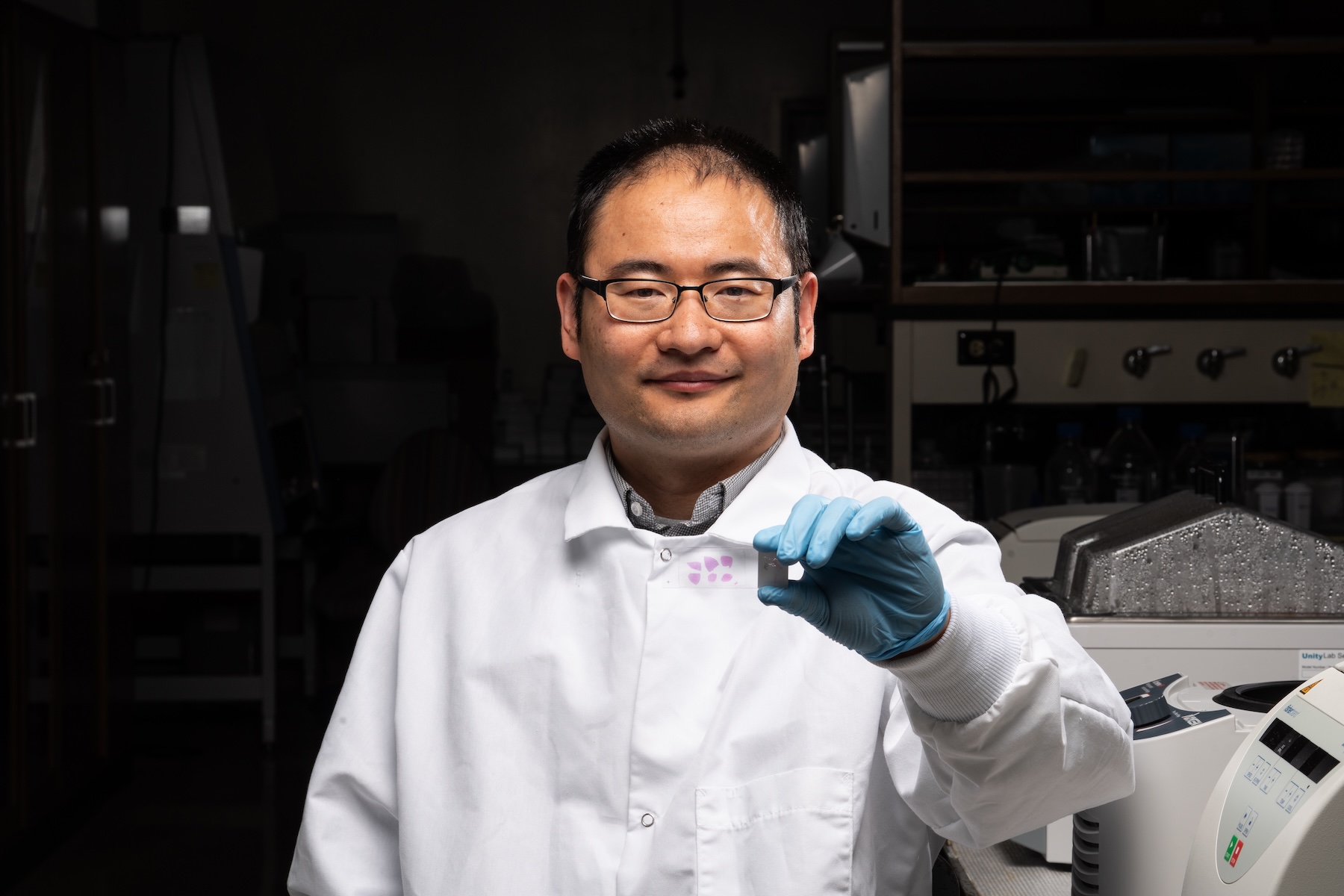 Weicang Wang, assistant professor in Purdue’s Department of Food Science, holds a slide with tissue cross sections.
Weicang Wang, assistant professor in Purdue’s Department of Food Science, holds a slide with tissue cross sections. This research is a part of Purdue’s presidential One Health initiative, which involves research at the intersection of human, animal and plant health and well-being.

